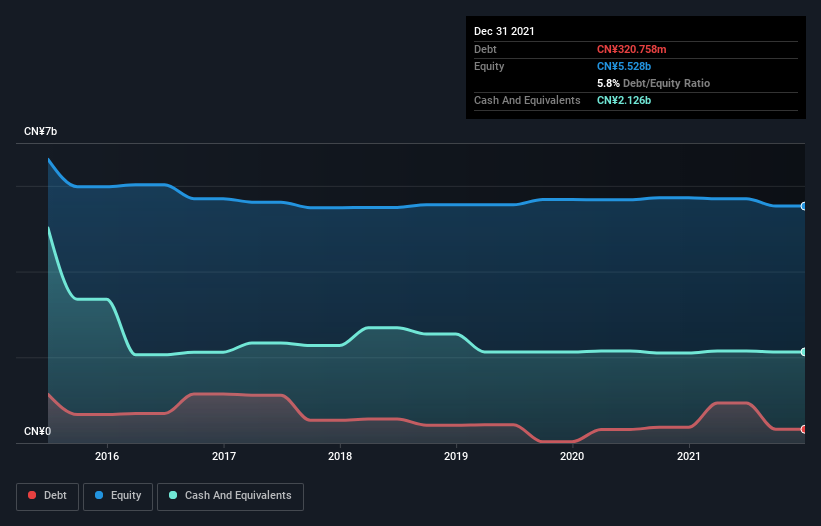Health Check: How Prudently Does Yashili International Holdings (HKG:1230) Use Debt?

Legendary fund manager Li Lu (who Charlie Munger backed) once said, 'The biggest investment risk is not the volatility of prices, but whether you will suffer a permanent loss of capital.' It's only natural to consider a company's balance sheet when you examine how risky it is, since debt is often involved when a business collapses. We can see that Yashili International Holdings Ltd (HKG:1230) does use debt in its business. But should shareholders be worried about its use of debt?
What Risk Does Debt Bring?
Debt and other liabilities become risky for a business when it cannot easily fulfill those obligations, either with free cash flow or by raising capital at an attractive price. In the worst case scenario, a company can go bankrupt if it cannot pay its creditors. However, a more usual (but still expensive) situation is where a company must dilute shareholders at a cheap share price simply to get debt under control. By replacing dilution, though, debt can be an extremely good tool for businesses that need capital to invest in growth at high rates of return. When we examine debt levels, we first consider both cash and debt levels, together.
View our latest analysis for Yashili International Holdings
What Is Yashili International Holdings's Debt?
You can click the graphic below for the historical numbers, but it shows that Yashili International Holdings had CN¥320.8m of debt in December 2021, down from CN¥365.9m, one year before. However, it does have CN¥2.13b in cash offsetting this, leading to net cash of CN¥1.81b.

How Healthy Is Yashili International Holdings' Balance Sheet?
The latest balance sheet data shows that Yashili International Holdings had liabilities of CN¥1.71b due within a year, and liabilities of CN¥40.3m falling due after that. Offsetting these obligations, it had cash of CN¥2.13b as well as receivables valued at CN¥444.7m due within 12 months. So it can boast CN¥819.5m more liquid assets than total liabilities.
This excess liquidity suggests that Yashili International Holdings is taking a careful approach to debt. Given it has easily adequate short term liquidity, we don't think it will have any issues with its lenders. Succinctly put, Yashili International Holdings boasts net cash, so it's fair to say it does not have a heavy debt load! When analysing debt levels, the balance sheet is the obvious place to start. But ultimately the future profitability of the business will decide if Yashili International Holdings can strengthen its balance sheet over time. So if you want to see what the professionals think, you might find this free report on analyst profit forecasts to be interesting.
Over 12 months, Yashili International Holdings reported revenue of CN¥4.4b, which is a gain of 22%, although it did not report any earnings before interest and tax. With any luck the company will be able to grow its way to profitability.
So How Risky Is Yashili International Holdings?
We have no doubt that loss making companies are, in general, riskier than profitable ones. And in the last year Yashili International Holdings had an earnings before interest and tax (EBIT) loss, truth be told. Indeed, in that time it burnt through CN¥502m of cash and made a loss of CN¥81m. Given it only has net cash of CN¥1.81b, the company may need to raise more capital if it doesn't reach break-even soon. With very solid revenue growth in the last year, Yashili International Holdings may be on a path to profitability. Pre-profit companies are often risky, but they can also offer great rewards. The balance sheet is clearly the area to focus on when you are analysing debt. However, not all investment risk resides within the balance sheet - far from it. These risks can be hard to spot. Every company has them, and we've spotted 1 warning sign for Yashili International Holdings you should know about.
At the end of the day, it's often better to focus on companies that are free from net debt. You can access our special list of such companies (all with a track record of profit growth). It's free.
New: Manage All Your Stock Portfolios in One Place
We've created the ultimate portfolio companion for stock investors, and it's free.
• Connect an unlimited number of Portfolios and see your total in one currency
• Be alerted to new Warning Signs or Risks via email or mobile
• Track the Fair Value of your stocks
Have feedback on this article? Concerned about the content? Get in touch with us directly. Alternatively, email editorial-team (at) simplywallst.com.
This article by Simply Wall St is general in nature. We provide commentary based on historical data and analyst forecasts only using an unbiased methodology and our articles are not intended to be financial advice. It does not constitute a recommendation to buy or sell any stock, and does not take account of your objectives, or your financial situation. We aim to bring you long-term focused analysis driven by fundamental data. Note that our analysis may not factor in the latest price-sensitive company announcements or qualitative material. Simply Wall St has no position in any stocks mentioned.
About SEHK:1230
Yashili International Holdings
Yashili International Holdings Ltd, an investment holding company, engages in manufacture and sale of dairy and nourishment products in the People's Republic of China and internationally.
Mediocre balance sheet with concerning outlook.
Similar Companies
Market Insights
Community Narratives



